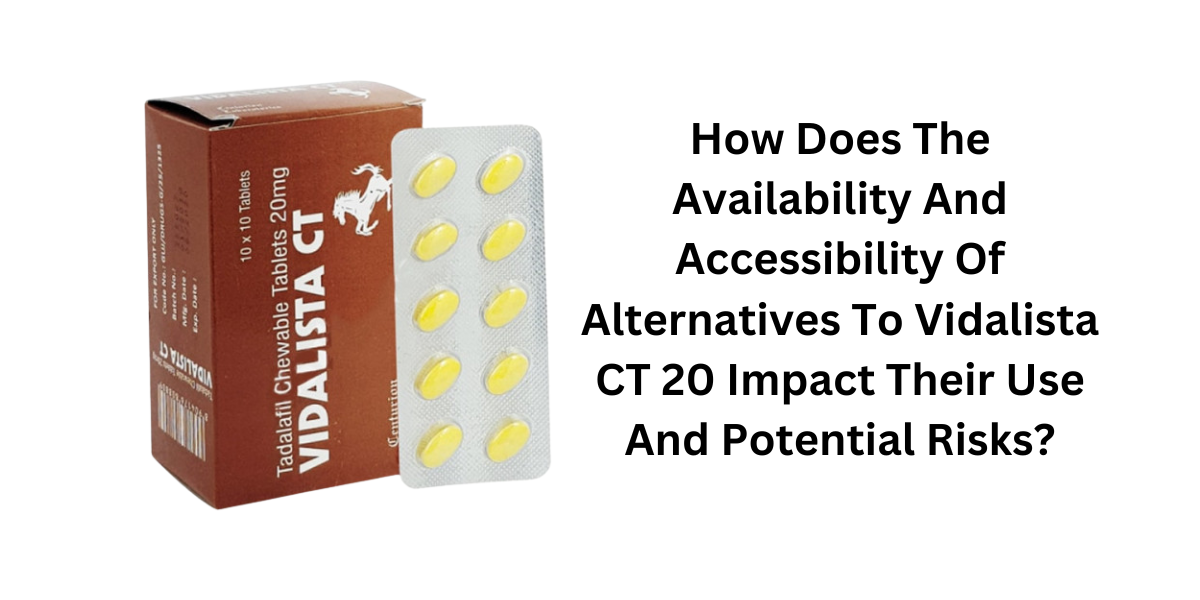In the realm of erectile dysfunction (ED) treatment, Vidalista CT 20 has gained significant attention for its efficacy. However, the availability and accessibility of alternatives to this medication play a crucial role in shaping usage patterns and mitigating potential risks. This article delves into the landscape of Vidalista CT 20 alternatives, their impact on usage, and the associated risks.
Understanding Vidalista CT 20:
Vidalista CT 20, a generic form of Cialis, belongs to a class of medications known as phosphodiesterase type 5 (PDE5) inhibitors. It works by increasing blood flow to the penis during sexual stimulation, aiding in achieving and maintaining an erection. While it offers notable benefits for individuals with ED, it also carries potential risks such as headaches, dizziness, and gastrointestinal discomfort.
Availability and Accessibility of Alternatives:
Several alternatives to Vidalista CT 20 exist in the market, ranging from other PDE5 inhibitors like Viagra and Levitra to natural supplements, lifestyle modifications, and alternative therapies. However, the availability and accessibility of these alternatives vary significantly based on factors such as geographical location, healthcare infrastructure, and regulatory policies. For instance, some regions may have limited access to certain medications due to regulatory restrictions or affordability issues.
Impact on Usage Patterns:
The availability of alternatives directly influences the usage patterns of Vidalista CT 20 and its counterparts. Patients may opt for alternative treatments based on factors such as cost, convenience, side effect profiles, and personal preferences. Additionally, healthcare providers play a crucial role in guiding patients towards suitable alternatives based on individual medical histories and treatment goals. Trends in usage patterns reflect the dynamic interplay between availability, accessibility, and patient preferences.
Potential Risks and Benefits of Alternatives:
While Vidalista CT 20 offers effective ED treatment, alternatives present varying degrees of risks and benefits. Some alternatives may have a similar efficacy profile with fewer side effects, while others may lack robust clinical evidence or carry potential risks of their own. Patients and healthcare providers must weigh these factors carefully when considering treatment options. Moreover, the benefits of alternatives extend beyond ED treatment, encompassing aspects such as overall sexual health, psychological well-being, and relationship dynamics.
Regulatory and Ethical Considerations:
Regulatory frameworks governing ED medications and their alternatives differ across jurisdictions. While stringent regulations aim to ensure the safety and efficacy of Tadalafil medications, they may inadvertently limit access to certain treatments. Ethical considerations also come into play concerning patient autonomy, informed consent, and equitable access to healthcare resources. Patient education and advocacy efforts are essential in fostering transparency, promoting informed decision-making, and addressing disparities in access to treatment options.
Conclusion:
The availability and accessibility of alternatives to Vidalista CT 20 significantly impact usage patterns and risks associated with ED treatment. Patients and healthcare providers must navigate a complex landscape of treatment options, considering factors such as efficacy, safety, accessibility, and ethical considerations. By fostering collaboration between stakeholders, promoting patient-centered care, and advocating for equitable access to treatment, we can optimize outcomes and enhance the quality of care for individuals with ED.
